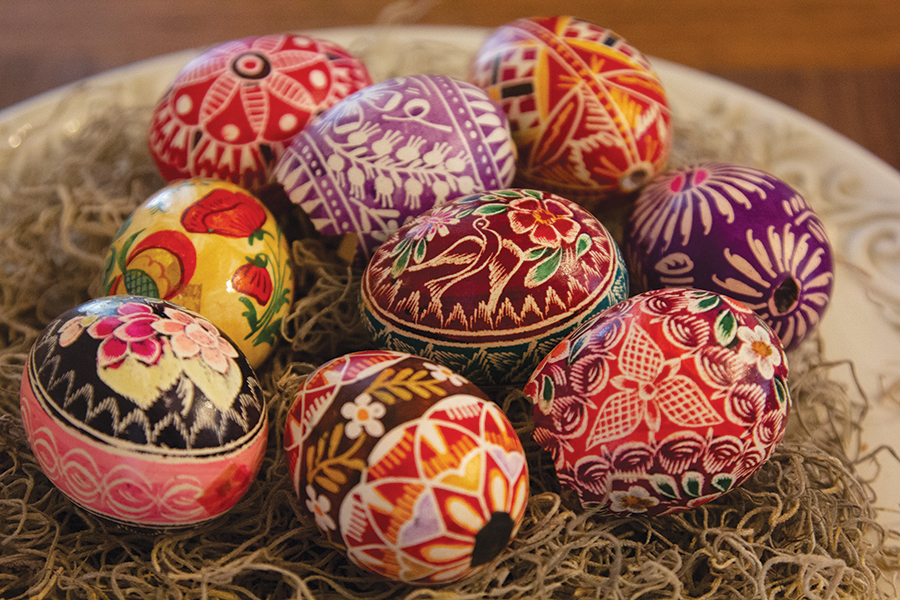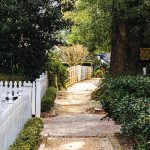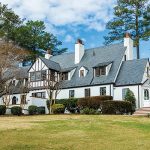
Buried Treasure
Discovering the Rockefeller “nest egg”
By Pamela Phillips
“Sold for $7 to the young lady in the back.”
There was one other bidder. Maybe two. But less than a minute after hitting the auction block the box was mine. That’s how the eggs came into my possession all those years ago.
Tucked away down a narrow dirt road north of Fort Bragg sit the remnants of an estate that once hosted some of America’s most powerful and wealthy families. Stately cottages, an opulent clubhouse and a Donald Ross-designed golf course welcomed guests who arrived in private railcars. Quiet and secluded, it was a paradise that many locals didn’t know existed.
Set among longleaf pine forests and winding streams, the idyllic tract known as Overhills was acquired by Percy A. Rockefeller, a nephew of Standard Oil founder John D., in the 1920s and remained in the family for nearly 80 years — first as an exclusive hunt club and later as a working farm and family retreat.
Percy’s great-grandchildren later decided to part with the beloved property, and it was sold to the U.S. Army. The sprawling acreage would provide additional training areas for Fort Bragg, but not before the barns and cottages were properly cleaned out. Which brings me to that sunny March morning in 1997.
Scores of vehicles lined the road a quarter of a mile into the grounds. Overhills was an enigma, and people were curious. I parked and headed toward the sale. Walking amid shadows of the once grand estate, I felt as if I were in another time.
Under rusting canopies, I joined the crowd inspecting odd farm implements, worn furniture and bags of golf clubs. Boxes overflowed with chipped pottery, dented pots and faded tablecloths. Not exactly priceless antiques.
A yellow and orange plaid pillow caught my eye. Beneath it was a box containing an Easter basket, several bags of plastic grass and, at the bottom, a cardboard egg carton. I pulled out the carton expecting to find mismatched halves of plastic eggs. Instead, I discovered beautifully painted eggs with intricate flowers, birds and geometric patterns detailed in rich, vibrant colors. A box of masterpieces!
I quickly closed the carton and put it back underneath the Easter grass and ugly pillow. I looked around. Does anyone else know what’s in the box? When I emerged as the winning bidder, I collected the box and made a beeline to my car.
At home I inspected my find. These were real, hollowed-out chicken eggs, certainly not Fabergé-class, but unique, and no two were alike. It wasn’t until years later that I researched and found that my “Rockefeller” eggs might very well be Pysanky.
Pysanky are hand-decorated eggs traditionally made during the Easter season throughout Eastern Europe, most notably in Poland and the Ukraine. Symbolic of the rebirth of nature after winter, they are believed to bring good luck or have special powers, such as protection from evil spirits. The eggs are not painted but inscribed with wax using a special stylus known as a kistka and dyed using natural colorants.
In the years since that day at Overhills, I often wondered about the eggs. Were they commissioned as gifts for the Rockefeller children? Picked up on a trip abroad? Created by a talented employee? I guess I’ll never know.
Recently I came across Pysanky “eggspert” Joan Brander, a Canadian artist who learned the art form from her Ukrainian grandmother and teaches it to others. She graciously interpreted some of the motifs and techniques used in their creation, pointing out the degrees of difficulty. She even included a recorded snippet of the correct pronunciation of Pysanky. It’s PEH-sen-keh. Of course, I’d been pronouncing it wrong.
Today Overhills lies hidden behind chain-link fencing, part of Fort Bragg’s Northern Training Area, the once-manicured golf course buried in overgrowth and the remaining structures crumbling from neglect. But one small piece of that fabled Overhills world lives on. Every spring, as Easter approaches, I pull out the cardboard carton and arrange the delicate treasures on a fancy platter. For a few weeks, as they have for the last quarter-century in my home, the Rockefeller eggs take center stage. PS
A native of Ohio, Pamela Phillips has called the Sandhills home since 1987. She is working on her first novel.





